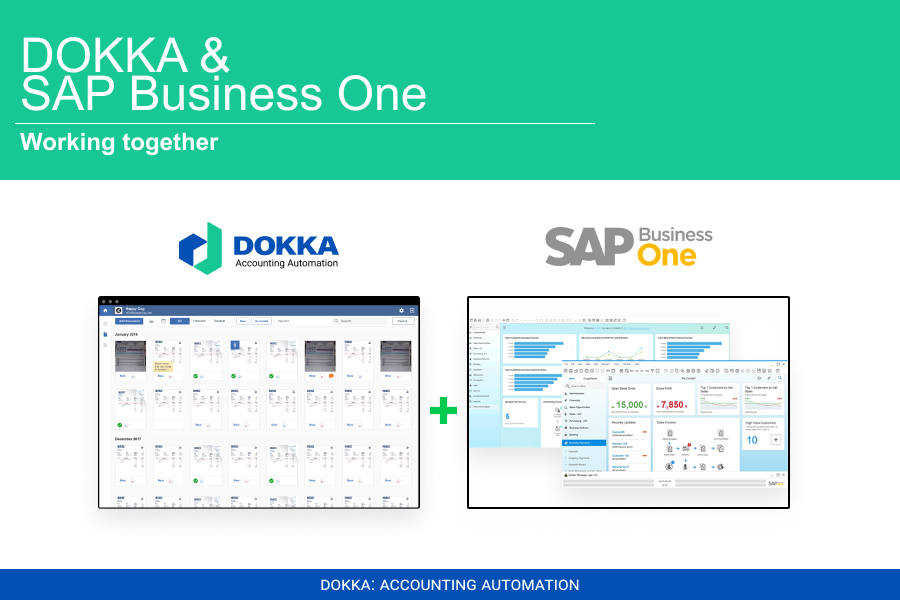SAP Business One is one of the most well known platforms in the enterprise resource planning (ERP) space – a business management tool that incorporates all functions, from marketing, to supply chain, even human resources.
And one of its most vital features its accounting capability. As business owners, we know that tracking cash flow in every phase of its movement within an enterprise is crucial to maintaining optimum fiscal control. And within that accounting capability, the accounts payable (AP) – the money owed to a business’s suppliers and vendors — requires even more of a focused eye.
That’s where DOKKA comes in.
A pioneering accounting automation tool, DOKKA merges seamlessly with SAP Business Oneto enhance the platform’s AP features. Here’s how it works.

What is SAP AP automation and how does it work?
Automation has allowed us to truly embrace our ultra-modern state of being always-on. With automation, we get to travel faster, shop faster, hail a taxi faster. If you think about it, most of what we need to do in a day is achieved more efficiently and much better by businesses that are embracing this directive of automation.
It’s a no-brainer then, that your business should adopt automation in every way it can. Because if not, there’s a risk you could be left floundering in the market, as your competition adapts quicker, through more efficient processes.
The benefits of SAP AP automation
The SAP Business One accounts payable function is augmented through DOKKA’s machine learning capability, allowing for the exposure of objects, fields, and operations to connect through a single layer, and mutually import and export vital AP data.
But what exactly, are the benefits of such a merging?
- Less time spent on manual work – In AP, processing invoices manually can be extremely time-consuming. DOKKA automatically scans invoices, indexes invoice information, and stores it all in digital filing cabinets for quick and easy retrieval.
- Lower margin of error – Where manual data entry is concerned, human error can hinder business processes and even be the cause of money lost. DOKKA’s integration with SAP Business One, validates data to ensure accurate accounting at all times.
- Cost savings – AP automation will give greater control over cash flow, so an organisation can prevent unnecessary costs at month end.
- Increased customer satisfaction – more efficient processes will prevent late payments, delays and errors that slow-down a business’s production time. A happy, satisfied customer base means a heightened reputation for you, and perpetual business.
How to get started with SAP AP automation?
SAP Business One accounts payable integrates directly with DOKKA as an entirely adaptable digital architecture within the ERP.
To allow the import and export of data between the two, the SAP Business One service layer simply needs to be installed and activated within DOKKA. Once completed, the URL from the SAP Business One Integrator is added to the DOKKA integrations connection. Users can then simply log in with their regular SAPS credentials and create additional companies with the click of a button.
DOKKA isn’t just an add-on to your ERP. It’s a tool for instant efficiency, and efficiency means better business.








